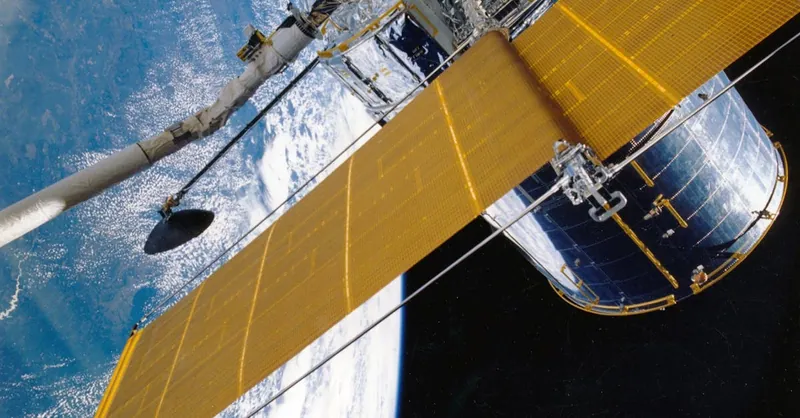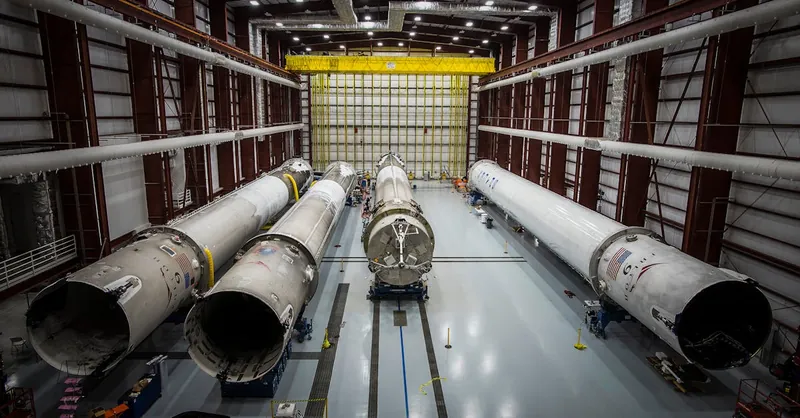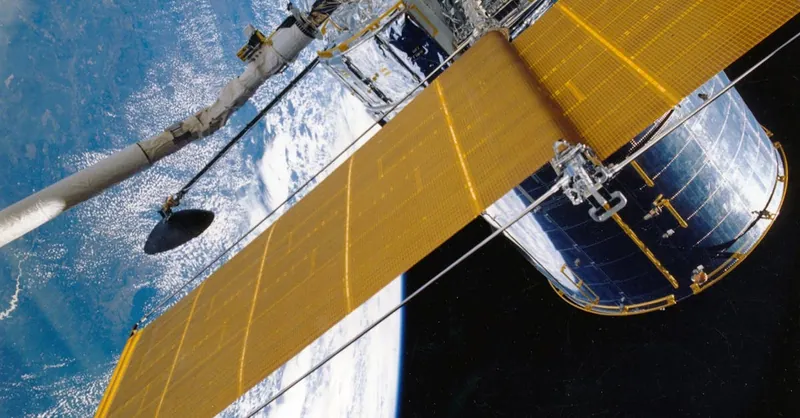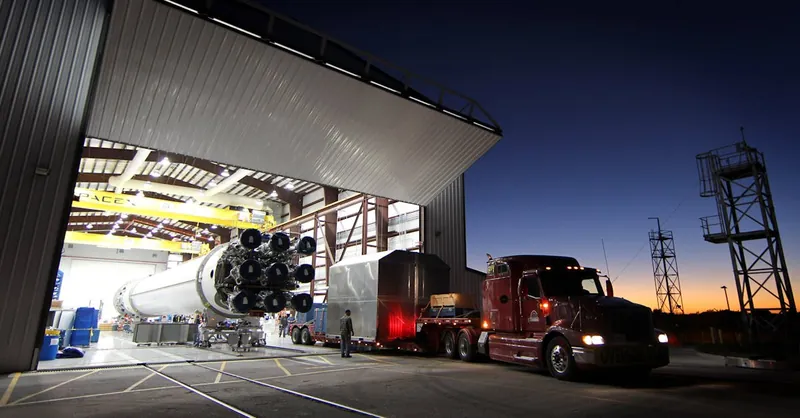Overview of Space Engineering Materials: Key Insights
Category: Astrophotography
Discover the Essentials of Space Engineering Materials
If you're an astronomy enthusiast, space engineering hobbyist, or an amateur astrophotographer seeking to deepen your understanding of the materials used in space technology, you’ve landed in the right place. Navigating the complex world of space engineering materials can be daunting—from ultra-lightweight alloys to advanced composites and radiation-resistant ceramics. You might be wondering which materials offer the best strength-to-weight ratio, thermal stability, or resistance to space radiation for your telescope builds or space-related projects. This article is tailored to cut through the jargon and deliver a comprehensive overview of the key materials powering modern and future space exploration. Unlike generic summaries, we merge expert-level technical details with accessible explanations, enabling you to grasp the science and practical applications. Whether you're conceptualizing telescope components or intrigued by spacecraft engineering, this post will unravel the key materials, their properties, and usage contexts, helping you choose wisely for your interests and projects. Read on to uncover the backbone of space technology and how understanding these materials enhances your grasp of planetology, astrophotography, and beyond.
- Discover the Essentials of Space Engineering Materials
- Introduction to Space Engineering Materials
- Key Properties Required in Space Materials
- Metals and Alloys in Space Engineering
- Advanced Composites and Polymers in Space Engineering
- Ceramics and Thermal Protection Materials
- Radiation Shielding Materials
- Nanomaterials and Emerging Technologies in Space Engineering
- Material Testing and Qualification for Space
- Sustainability and In-situ Resource Utilization (ISRU) in Space Engineering Materials
- Applications in Telescope Building and Astrophotography Equipment
Introduction to Space Engineering Materials
Space engineering materials are specially designed substances engineered to withstand the harsh and unforgiving conditions of outer space. Unlike materials used on Earth, these materials must endure extreme challenges such as intense radiation, drastic temperature fluctuations, microgravity, vacuum exposure, and high-velocity impacts from micrometeoroids. These unique environmental constraints make traditional building materials often unsuitable for spacecraft, satellite components, telescope housings, or planetary exploration instruments.
The primary challenges faced by space engineering materials include:
- Radiation Resistance: Cosmic rays and solar radiation can degrade materials by causing molecular damage or inducing electrical charges.
- Thermal Stability: Extreme temperature variations, from the searing heat of direct sunlight to the freezing cold of shadowed regions, require materials that maintain structural integrity and dimensional stability.
- Mechanical Strength and Weight: Spacecraft demand materials with high strength-to-weight ratios to ensure durability while minimizing launch costs.
- Vacuum Compatibility: Materials must resist outgassing and avoid structural changes in the near-perfect vacuum of space.
- Corrosion and Wear Resistance: Exposure to atomic oxygen in low Earth orbit can erode typical materials, leading to premature failure.
Because of these conditions, traditional materials like standard metals, plastics, or composites used on Earth generally fail to meet the rigorous demands of space applications. Instead, space engineering relies on advanced alloys, ceramics, and polymer composites specifically formulated or treated to resist radiation, thermal shock, and mechanical stresses unique to space environments. Understanding these materials not only aids in the design of reliable spacecraft components but also empowers astronomy hobbyists and telescope makers to select components optimized for performance and longevity in space-related contexts.

Image courtesy of Pixabay
Key Properties Required in Space Materials
Selecting the right materials for space engineering hinges on a combination of critical properties tailored to the unforgiving space environment. One of the most essential criteria is the strength-to-weight ratio, which dictates how durable a material is relative to its weight. Since every extra kilogram launched into orbit exponentially increases mission costs, materials used in spacecraft structures, satellite frameworks, and telescope mounts must be incredibly strong yet ultra-lightweight. Advanced alloys like titanium and aluminum-lithium blends exemplify this balance, delivering high tensile strength without excessive mass.
Beyond mechanical strength, thermal resistance plays a pivotal role due to the intense temperature extremes encountered in space. Materials must remain stable and maintain their structural integrity across a wide temperature range — from the blistering heat of direct solar exposure, which can exceed +120°C, to the frigid cold of deep shadow, sometimes dropping below -150°C. Thermal expansion mismatches can cause warping or failure, making materials with low coefficients of thermal expansion (CTE) highly desirable. Composite materials and specially engineered ceramics often offer these thermal advantages.
Another fundamental property is durability under radiation exposure, as cosmic rays, solar wind, and high-energy particles bombard spacecraft continually. Materials must exhibit radiation shielding capabilities to protect critical electronics and maintain their own physical and chemical stability. Polymers may degrade or discolor, while metals can embrittle under intense radiation, necessitating radiation-resistant alloys and coatings.
Corrosion resistance is equally crucial, particularly in low Earth orbit where atomic oxygen aggressively oxidizes and erodes exposed surfaces. Novel surface treatments and oxidation-resistant materials help extend the lifespan of spacecraft by preventing degradation. Also, because space operates in a vacuum, materials must have excellent mechanical performance in vacuum conditions, avoiding outgassing — the release of trapped gases — which can contaminate sensitive instruments or degrade thermal control surfaces.
To summarize, the principal properties that define suitable space engineering materials include:
- High strength-to-weight ratio for optimized structural efficiency
- Exceptional thermal resistance over extreme temperature cycles
- Radiation shielding and degradation resistance to withstand cosmic exposure
- Corrosion and atomic oxygen resistance, especially in low Earth orbits
- Mechanical stability in vacuum, minimizing outgassing and dimensional changes
Understanding these key characteristics enables engineers and astronomy enthusiasts alike to select materials that not only survive but thrive in space, driving advancements in spacecraft design, telescope construction, and planetary exploration technology.

Image courtesy of Pixabay
Metals and Alloys in Space Engineering
Metals and alloys form the structural backbone of spacecraft, satellite components, and scientific instruments due to their outstanding mechanical strength, durability, and adaptability in the harsh space environment. Among the most commonly used metals are aluminum alloys, titanium, and nickel-based superalloys such as Inconel, each selected for their specific properties addressing space engineering challenges.
Aluminum Alloys
Aluminum alloys are favored for their exceptionally high strength-to-weight ratio, corrosion resistance, and ease of fabrication. Alloys such as 2024 and 7075 have been extensively used in spacecraft frameworks and aerospace structures because they combine lightweight characteristics with sufficient mechanical strength. Moreover, aluminum exhibits excellent thermal conductivity, which helps dissipate heat from onboard instruments and electronic components. Its natural oxide layer also provides inherent protection against oxidation from atomic oxygen in low Earth orbit, making it a reliable choice for satellite panels and telescope housings.
Titanium Alloys
Titanium and its alloys offer superior strength, fatigue resistance, and corrosion resistance while maintaining a relatively low density. This combination makes titanium ideal for critical load-bearing components like spacecraft structural members, fasteners, and propulsion system parts. Furthermore, titanium has a low coefficient of thermal expansion (CTE), which minimizes distortion during large temperature swings in space, preserving the dimensional stability crucial for precision instruments, such as space telescopes and scientific payloads.
Inconel and Other Nickel-based Superalloys
Nickel-based superalloys such as Inconel excel in extreme environments due to their remarkable resistance to high temperatures, oxidation, and radiation damage. Inconel maintains mechanical integrity at elevated temperatures exceeding 700°C, making it indispensable in propulsion systems, engine components, and thermal protection layers. Its resistance to radiation-induced embrittlement further ensures reliability in long-duration missions exposed to intense cosmic radiation.
Summary of Key Metals in Space Engineering
| Metal / Alloy | Key Properties | Typical Applications |
|---|---|---|
| Aluminum Alloys | Lightweight, corrosion resistant, good thermal conductivity | Spacecraft frames, satellite panels, telescope housings |
| Titanium Alloys | High strength, corrosion resistant, low thermal expansion | Structural supports, fasteners, precision instruments |
| Inconel (Nickel-based) | Heat resistant, oxidation and radiation resistant | Propulsion systems, thermal shields, engine parts |
By leveraging these metals and alloys, space engineers achieve the critical balance between weight efficiency, thermal stability, and durability necessary for successful space missions and the advancement of astronomical instrumentation. Understanding the unique performance traits of these metals empowers hobbyists and professionals alike to make informed decisions when designing or selecting materials for spacecraft components or advanced telescope systems.

Image courtesy of SpaceX
Advanced Composites and Polymers in Space Engineering
As space missions push further and demands for lighter, stronger materials intensify, advanced composites and polymers have become indispensable in modern space engineering. These materials deliver outstanding strength-to-weight ratios, flexibility, and resistance to harsh space conditions, making them ideal for spacecraft structures, antenna arrays, satellite components, and flexible telescope elements.
Carbon Fiber Composites
Foremost among advanced materials are carbon fiber reinforced composites (CFRCs), which combine carbon fibers with polymer matrix resins to achieve exceptional mechanical performance. Carbon fiber composites offer:
- High tensile strength and stiffness while weighing significantly less than metals such as aluminum or titanium.
- Low coefficient of thermal expansion (CTE), ensuring dimensional stability during severe temperature fluctuations common in orbit or deep space.
- Excellent fatigue resistance, which is critical for components subjected to cyclic stresses during launch and operation.
- Resistance to radiation-induced degradation and corrosion, enhancing long-term durability.
Due to these benefits, carbon fiber composites are widely used in spacecraft structural frames, solar panel substrates, and optical benches in space telescopes. Their lightweight nature substantially reduces launch costs and improves payload efficiency.
Reinforced Plastics and Polymer Matrices
Alongside carbon fiber composites, reinforced plastics and specialized polymers are increasingly utilized for insulation layers, coatings, and flexible joints. These materials include:
- Epoxy resins and thermoset polymers: Often used as matrices in composite materials, they provide robust bonding between fibers and excellent environmental resistance.
- Polyimide films like Kapton®: These films tolerate extreme temperatures and radiation exposure, commonly implemented in multilayer insulation blankets protecting spacecraft from thermal extremes.
- Fluoropolymers (e.g., Teflon®): Used for their chemical inertness and resistance to atomic oxygen erosion, essential for surfaces exposed to low Earth orbit conditions.
These polymers contribute vital properties such as flexibility, electrical insulation, and outgassing resistance, ensuring spacecraft systems maintain integrity and performance over extended missions.
Benefits of Using Advanced Composites and Polymers
- Weight reduction leads to cost savings on launches and allows inclusion of more scientific instrumentation.
- Thermal and dimensional stability critical for precision instruments, such as adaptive optics in space telescopes.
- Enhanced mechanical compliance allows structures to absorb vibrations and impacts better without damage.
- Resistance to environmental degradation including radiation, atomic oxygen, and micrometeoroids.
Incorporating these advanced composites and polymers revolutionizes spacecraft design by enabling sophisticated, lightweight, and resilient structures that withstand the extreme challenges of outer space.
By understanding the capabilities and applications of carbon fiber composites, reinforced plastics, and high-performance polymers, space engineers and astronomy enthusiasts can optimize their projects for maximum durability, efficiency, and performance in space environments.

Image courtesy of Quentin Martinez
Ceramics and Thermal Protection Materials
In the realm of space engineering, ceramics and thermal protection materials play a crucial role in safeguarding spacecraft during extreme heat events such as atmospheric reentry and managing thermal loads across diverse mission phases. These materials are engineered to endure temperatures soaring above 1500°C, rapid thermal cycling, and erosion caused by high-velocity gas flows and radiative heating, making them indispensable for spacecraft thermal management and structural resilience.
Heat-Resistant Ceramics
Heat-resistant ceramics, including silicon carbide (SiC), aluminum oxide (Al2O3), and zirconium dioxide (zirconia, ZrO2), boast exceptional thermal stability, high melting points, and outstanding oxidation resistance. Their intrinsic hardness and low thermal conductivity help minimize heat transmission to sensitive spacecraft internal systems and instrumentation. These ceramics are commonly integrated into components such as:
- Thermal barriers for turbine blades and exhaust nozzles
- Insulating tiles for space shuttle surfaces
- Structural parts in high-temperature sections of spacecraft
The brittleness of ceramics is often mitigated by advanced processing techniques and composite formulations, allowing their application in environments where metals or polymers would fail due to thermal degradation.
Ablative Materials
Ablative materials form the frontline defense during spacecraft reentry by absorbing and dissipating intense heat through controlled surface erosion. These materials, often composite in nature, sacrifice their outer layers to carry away heat energy, thus protecting the underlying structure. Common ablatives include:
- Phenolic impregnated carbon ablator (PICA) – a lightweight composite used on heat shields of missions like NASA’s Mars Science Laboratory.
- Avcoat – an epoxy-novalac resin with silica fibers, notably employed on Apollo capsules.
Ablative heat shields are designed to withstand the aerodynamic heating exceeding 2000°C and to maintain structural integrity despite thermal shock and mechanical stress. Their unique ability to manage thermal loads without adding excessive mass makes them essential for atmospheric entry vehicles.
Coatings for Thermal Control
Specialized coatings complement thermal protection systems by reflecting solar radiation, regulating emissivity, or minimizing absorptivity of heat. These include:
- Thermal control paints and multi-layer insulation (MLI) with alternating reflective and spacer layers to minimize heat transfer.
- Oxidation-resistant coatings on metals and ceramics to enhance lifespan in oxidative space environments.
- Low-emissivity coatings that reduce radiative heat loss, crucial for maintaining operational temperatures of spacecraft instruments.
By strategically employing these coatings, spacecraft designers can maintain optimal temperature ranges to protect delicate electronics and maintain structural dimensional stability.
Why Ceramics and Thermal Protection Materials Matter
- Reentry Survivability: Without robust ablative and ceramic materials, spacecraft would succumb to destructive thermal loads during atmospheric return.
- Thermal Management: Efficient ceramic insulators and coatings ensure spacecraft instruments operate within their temperature limits, supporting mission success.
- Durability in Harsh Conditions: These materials resist oxidation, radiation, and high-velocity particle impacts better than many metals or polymers, enhancing mission longevity.
For enthusiasts and engineers working on projects involving spacecraft thermal control systems or instrument housings, grasping the functionality and limitations of ceramics and thermal protection materials is vital. Integrating these materials effectively leads to safer, more reliable space missions and prolongs the operational lifespan of sensitive astronomical equipment.

Image courtesy of Thắng-Nhật Trần
Radiation Shielding Materials
In the harsh environment of space, radiation shielding materials are critical for protecting both sensitive spacecraft electronics and the health of astronauts from the pervasive cosmic radiation and energetic solar particles. Unlike Earth, which benefits from its magnetic field and atmosphere to filter out harmful radiation, spacecraft and space habitats are directly exposed to galactic cosmic rays (GCRs), solar particle events (SPEs), and trapped radiation belts, necessitating specialized shielding solutions to prevent performance degradation and severe biological effects.
Types of Radiation and Their Effects
Radiation encountered in space primarily falls into:
- High-energy protons and heavy ions from galactic cosmic rays that can displace atomic structures, leading to material embrittlement and electronic component failure.
- Solar energetic particles, mainly protons and electrons, which cause ionization and potential single-event upsets in microelectronics.
- Secondary radiation, generated when primary particles interact with the spacecraft hull, producing neutrons and other particles that amplify the radiation dose inside.
Effective shielding materials must therefore address both direct particle penetration and secondary radiation production.
Common Radiation Shielding Materials
-
Hydrogen-rich polymers and composites: Materials like polyethylene are highly effective at attenuating high-energy protons and heavy ions due to their high hydrogen content. Hydrogen atoms efficiently reduce particle energy through collision processes, making polymers superior to heavier metals for radiation protection relative to weight. These polymers are widely used as liner materials inside spacecraft walls and in astronaut spacesuit construction.
-
High-density metals such as lead and tungsten provide excellent shielding against gamma and x-rays but are generally too heavy for structural uses in spacecraft. Instead, lighter metals like aluminum are optimized for combining structural purposes with modest radiation attenuation.
-
Advanced multifunctional composites: Recent advances focus on embedding hydrogen-rich materials into composite matrices, achieving a dual function of structural strength and radiation shielding. Innovative materials like boron nitride nanotubes and hydrogenated carbon-based composites are being researched for next-generation spacecraft.
-
Radiation-resistant coatings and thin films also help by reducing secondary particle generation and protecting sensitive electronics from charged particles and ultraviolet radiation.
Key Considerations for Effective Radiation Shielding
- Balancing mass and protection: Since adding shielding material increases launch weight, engineers prioritize materials that offer maximum protection per unit mass, making lightweight hydrogen-rich polymers especially favored.
- Minimizing secondary radiation: Shielding must mitigate not only direct radiation but also limit the production of harmful secondary particles.
- Longevity and durability under radiation exposure: Materials must retain their structural and shielding properties despite prolonged bombardment by high-energy particles.
- Integration with spacecraft design: Radiation shielding is often incorporated into multifunctional layers—combining thermal insulation, micrometeoroid protection, and structural support.
By understanding and applying advanced radiation shielding materials, spacecraft designers and astronomy practitioners can effectively safeguard critical electronics and crew health, ensuring reliable operation of space missions and enabling safer human exploration beyond Earth’s protective envelope. This fundamental knowledge is essential when selecting or designing components for satellites, probes, or crewed spacecraft operating in high-radiation environments such as lunar orbit, Mars expeditions, or deep space observatories.

Image courtesy of Pixabay
Nanomaterials and Emerging Technologies in Space Engineering
The frontier of space engineering materials is rapidly expanding with the advent of nanomaterials and emerging technologies that promise to revolutionize future spacecraft, telescopes, and planetary exploration systems. These cutting-edge materials harness unique nanoscale properties—such as extraordinary strength, thermal conductivity, and electrical capabilities—that far exceed those of traditional bulk materials, enabling unprecedented performance and miniaturization in space applications.
Graphene: The Wonder Material for Space
At the forefront is graphene, a single layer of carbon atoms arranged in a hexagonal lattice, renowned for its exceptional mechanical strength (around 200 times stronger than steel) and ultra-lightweight nature. Its outstanding thermal conductivity and electrical properties make graphene an ideal candidate for:
- Spacecraft structural components that require enhanced durability without added mass.
- Flexible, lightweight solar panels with improved energy efficiency.
- Thermal management systems capable of rapidly dissipating heat from electronic devices.
- Next-generation sensors and antennas benefiting from graphene’s conductivity and transparency.
Research is actively exploring graphene composites and coatings to enhance radiation resistance and mitigate degradation from atomic oxygen exposure, addressing key challenges of orbiting environments.
Aerogels: Ultra-lightweight Thermal Insulators
Another groundbreaking class of nanomaterials is aerogels, highly porous solids characterized by their extremely low density and exceptional thermal insulation properties. Silica and carbon-based aerogels are already being tested in space systems for:
- Thermal insulation layers in spacecraft and telescopes, reducing thermal fluctuations and protecting sensitive instruments.
- Lightweight supports and panels that minimize mass while providing structural integrity.
- Dust collectors and filtration systems that leverage aerogel’s large surface area for sample containment on planetary missions.
Emerging aerogel composites promise further improvements in mechanical strength and radiation resistance, expanding their viability for deep space exploration.
Other Promising Nanotechnologies and Materials
In addition to graphene and aerogels, several other nanomaterials and emerging technologies hold significant potential for space engineering:
- Carbon nanotubes (CNTs): Offering remarkable tensile strength and electrical conductivity, CNTs are poised for use in ultra-strong cables, composite reinforcements, and thermal interfaces.
- Nanostructured coatings: These coatings can dramatically enhance radiation shielding, reduce outgassing, and improve surface durability against atomic oxygen and micrometeoroid erosion.
- Metamaterials engineered at the nanoscale enable advanced electromagnetic management, such as cloaking devices, enhanced antennas, and thermal radiation control.
- Self-healing materials incorporating nanocapsules or microcapsules capable of autonomously repairing microcracks and damages caused by space debris or radiation.
Impact on Future Space Engineering Projects
Integrating these nanomaterials and innovative technologies into spacecraft and telescopes promises to:
- Drastically reduce launch costs through weight savings without compromising strength or durability.
- Enhance spacecraft longevity by improving resistance to radiation, thermal extremes, and erosion.
- Enable new functionalities like adaptive optics elements, flexible electronics, and energy harvesting surfaces.
- Boost performance of planetary probes and satellites operating in extreme or previously inaccessible environments.
For astronomy professionals and space engineering enthusiasts, staying informed about these nanomaterials and emerging trends is essential to pioneering the next generation of space exploration technologies and astrophotography instrumentation. Embracing these advances will unlock new horizons in precision, reliability, and mission capabilities beyond conventional material limits.

Image courtesy of Pixabay
Material Testing and Qualification for Space
Before any material is approved for use in spacecraft, satellites, or space telescopes, it undergoes rigorous testing and qualification processes to ensure it can withstand the harsh and unique conditions of space. This critical phase validates that materials will maintain their integrity, functionality, and safety when exposed to vacuum, radiation, microgravity, and mechanical stresses during launch and operation in orbit or deep space.
Vacuum and Outgassing Tests
One of the primary challenges materials face in space is exposure to the near-perfect vacuum. In these conditions, materials can release trapped gases in a process called outgassing, which contaminates sensitive optics, electronics, and thermal control surfaces. Therefore, materials undergo vacuum chamber testing where they are subjected to high vacuum to measure:
- Total Mass Loss (TML): The amount of material lost due to outgassing.
- Collected Volatile Condensable Material (CVCM): The volume of condensed gases that can deposit on critical surfaces.
Lower TML and CVCM values indicate a material is better suited for space applications, ensuring it contributes minimal contamination risks.
Radiation Exposure and Durability Testing
Space materials are bombarded by high-energy particles and UV radiation that can degrade polymers, embrittle metals, and impact coatings. To simulate these effects, materials undergo accelerated radiation tests using gamma rays, proton beams, and ultraviolet lamps to evaluate:
- Structural integrity retention after radiation exposure.
- Changes in mechanical properties, such as tensile strength and elasticity.
- Color changes or surface degradation impacting thermal control or optical performance.
Such testing helps engineers select radiation-hardened alloys, radiation-resistant composites, or protective coatings vital for long-duration missions.
Thermal Cycling and Shock Testing
Space environments feature rapid and extreme temperature fluctuations, sometimes sweeping hundreds of degrees Celsius within minutes, especially in low Earth orbit and on lunar or Martian surfaces. Materials are subjected to:
- Thermal cycling tests that repeatedly expose samples to high and low temperatures to assess fatigue resistance and dimensional stability.
- Thermal shock tests which rapidly change temperatures to observe the material’s resistance to cracking, warping, or delamination.
These tests ensure that metals, composites, and ceramics can maintain their shape and functionality without failure over months or years in space.
Mechanical Stress and Vibration Testing
Launching a spacecraft involves intense vibration and mechanical stresses. Materials and components must endure:
- Vibration testing mimicking rocket liftoff dynamics to verify structural integrity.
- Static and dynamic mechanical loading to evaluate strength, toughness, and fatigue limits under operational stresses.
- Impact resistance tests to simulate micrometeoroid and debris strikes common in orbit.
Compliance with these mechanical standards guarantees the durability and safety of spacecraft structures and delicate telescope mechanisms.
Qualification Standards and Certification
To ensure consistency and reliability, space materials must comply with international and agency-specific standards such as those defined by NASA, ESA, and ISO. These standards specify criteria for:
- Material composition and processing controls to maintain quality and reproducibility.
- Performance benchmarks in vacuum, radiation, thermal cycles, and mechanical loads.
- Documentation and traceability supporting lifecycle management from testing through operation.
Certified materials not only enhance mission success rates but also provide valuable reference points for engineers, researchers, and astronomy hobbyists engaged in developing space-grade equipment.
By mastering the material testing and qualification protocols, space engineers and astronomy enthusiasts can confidently select materials verified to endure vacuum conditions, ionizing radiation, microgravity effects, and mechanical stresses inherent to space missions, thereby advancing the design of resilient spacecraft, telescopes, and exploratory instruments.

Image courtesy of Stanislav Kondratiev
Sustainability and In-situ Resource Utilization (ISRU) in Space Engineering Materials
As space exploration ambitions extend beyond Earth orbit to the Moon, Mars, and deeper into the solar system, sustainability and in-situ resource utilization (ISRU) have become critical pillars in reducing mission costs and increasing autonomy. Rather than launching all construction and manufacturing materials from Earth— which significantly increases payload mass and expense— ISRU focuses on harvesting and processing local extraterrestrial materials to produce building components, life support elements, and fuels directly on-site. This paradigm shift toward sustainability is poised to revolutionize habitat construction, spacecraft refueling, and infrastructure development on planetary surfaces.
Utilizing Lunar and Martian Materials for Habitat and Manufacturing
The Moon and Mars offer abundant materials that can be converted into structural building blocks and manufacturing feedstocks. Key resources include:
- Regolith (surface soil): Lunar and Martian regolith contains silicates, iron oxides, and other minerals that can be processed into ceramics, concrete-like composites, or metal alloys. Techniques such as sintering, 3D printing, and geopolymerization enable construction of habitats, radiation shielding walls, and landing pads directly from regolith.
- Ice deposits: Water ice found in permanently shadowed lunar craters or beneath the Martian surface can be electrolyzed to produce oxygen for breathing and hydrogen for fuel, supporting life-sustaining systems and propellant manufacturing.
- Metal extraction: Martian soil features iron, aluminum, and titanium oxides that, with advanced extraction and refining methods, could supply metals for structural frameworks, tools, and spare parts.
Benefits of ISRU for Space Engineering
- Dramatic mass reduction at launch: By minimizing the need to carry building materials and consumables from Earth, ISRU dramatically lowers launch costs and enables larger, more sustainable missions.
- Enhanced mission sustainability: Local resource utilization supports long-term human presence by providing continuous supply chains for construction, maintenance, and fuel.
- Flexibility in design and manufacturing: On-site fabrication using additive manufacturing and ISRU materials allows adaptive construction, rapid repair, and customization of habitat modules and equipment.
- Radiation protection: Regolith-based shielding materials offer effective protection against cosmic rays and solar particle radiation, leveraging densely packed soil to create thick walls with minimal Earth-supplied additives.
Current Efforts and Technologies
Numerous research projects and demonstration missions focus on ISRU technologies, including:
- NASA’s Lunar Gateway and Artemis programs, which aim to validate lunar regolith processing and additive manufacturing techniques for habitat construction.
- Robotic experiments like MOXIE (Mars Oxygen In-Situ Resource Utilization Experiment) on the Mars 2020 Perseverance rover, successfully producing oxygen from Martian atmospheric CO₂.
- Development of sintering robots, 3D printers, and melting technologies capable of transforming extraterrestrial regolith into durable construction materials without volatile binders.
By integrating sustainable material sourcing and ISRU strategies, future space endeavors can transcend current payload constraints and architect self-sufficient outposts on the Moon, Mars, and beyond, opening the gateway to permanent human settlement and expanded scientific exploration. For space engineers, astronomers, and hobbyists, understanding the evolving landscape of ISRU materials enriches the design possibilities for next-generation spacecraft, telescopes, and planetary habitats optimized for off-world environments.

Image courtesy of SpaceX
Applications in Telescope Building and Astrophotography Equipment
The selection of space engineering materials for telescope building and astrophotography equipment is critical to achieving high optical performance, mechanical stability, and durability in challenging environments—from ground-based observatories to space telescopes operating in orbit. Materials must withstand extreme thermal fluctuations, resist radiation damage, and maintain precise dimensional tolerances to ensure optimal light-gathering and image quality for both professional and amateur astronomers.
Materials for Optical Components
Optical elements such as mirrors and lenses demand materials with exceptional thermal stability and minimal thermal expansion to preserve surface figure accuracy. Commonly favored materials include:
- Ultra-low expansion glasses and ceramics, such as fused silica, Zerodur®, and silicon carbide (SiC), which maintain shape precision despite temperature changes.
- Beryllium, prized in space telescopes like the James Webb Space Telescope, for its extraordinary stiffness-to-weight ratio and thermal stability at cryogenic temperatures.
- Coatings on optical surfaces utilize materials like enhanced aluminum, silver, or dielectric multilayers to improve reflectivity, durability, and resistance to atomic oxygen in low Earth orbit.
Structural Materials for Mounts and Supports
Telescope mounts and instrument housings require materials offering high strength-to-weight ratios, resistance to vibration, and low thermal deformation. This ensures that optical alignments remain stable during observations and spacecraft maneuvers. Preferred materials include:
- Titanium and aluminum alloys, combining lightness with rigidity and ease of machining.
- Carbon fiber reinforced composites (CFRCs), widely used for their outstanding stiffness, low coefficient of thermal expansion, and vibration damping properties, crucial for minimizing mechanical noise in sensitive astrophotography equipment.
- Invar®, a nickel-iron alloy known for extremely low thermal expansion, used in precision instrument frames to maintain alignment across wide temperature ranges.
Housings and Protective Structures
Protective housings for cameras, detectors, and telescope assemblies must balance robustness against micrometeoroid impacts, radiation shielding, and thermal management. Materials often employed are:
- Aluminum-lithium alloys and Inconel, offering corrosion resistance and structural integrity.
- Multi-layer insulation (MLI) blankets and thermal coatings that regulate temperature extremes and reduce contamination risks.
- Hydrogen-rich polymer composites, integrated for internal radiation shielding to protect sensitive detectors from charged particles.
By carefully integrating these specialized materials, telescope builders and astrophotographers can enhance instrument longevity, optical precision, and imaging fidelity, ensuring that their equipment performs reliably in the face of space’s thermal, mechanical, and radiative challenges. Emphasizing advanced composites for structural elements alongside radiation-hardened and thermally stable optical materials delivers the optimal balance for next-generation astronomical instrumentation.

Image courtesy of lil artsy
